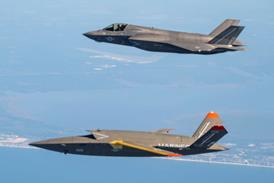A multi-directional laser sensor system for accurately determining airspeed has been developed by a consortium led by BAE Systems Advanced Technology Centre.
The Laser Air Speed Sensor Instrument (LASSI) uses ultra-violet laser light, directed via fibre optics to three sensors located at different points on the aircraft’s surface.
Reflection of the laser light by passing air molecules is detected by the sensor. The Doppler shift of the reflected light enables airspeed to be calculated. The use of three LASSI sensors allows the aircraft’s velocity vector to be determined.
“So far we’ve put together a breadboard system to allow an assessment in the lab,” says project manager Leslie Laycock.
LASSI is said by BAE Systems to have advantages over traditional pitot tubes because it does not cause drag, reduces the radar cross-section and is accurate at low speeds.
The sensor could also be used to aid helicopter landings where the ground is obscured by “brown out” caused by rotor-blown sand.
The LASSI project involved the UK University of Hull’s physics department and Basildon, UK-based company Advanced Optical Technology, which provided the laser.
The research work began two years ago and is expected to last another three. The partners will then seek to commercialise the sensor.
ROB COPPINGER/LONDON
Source: Flight International























